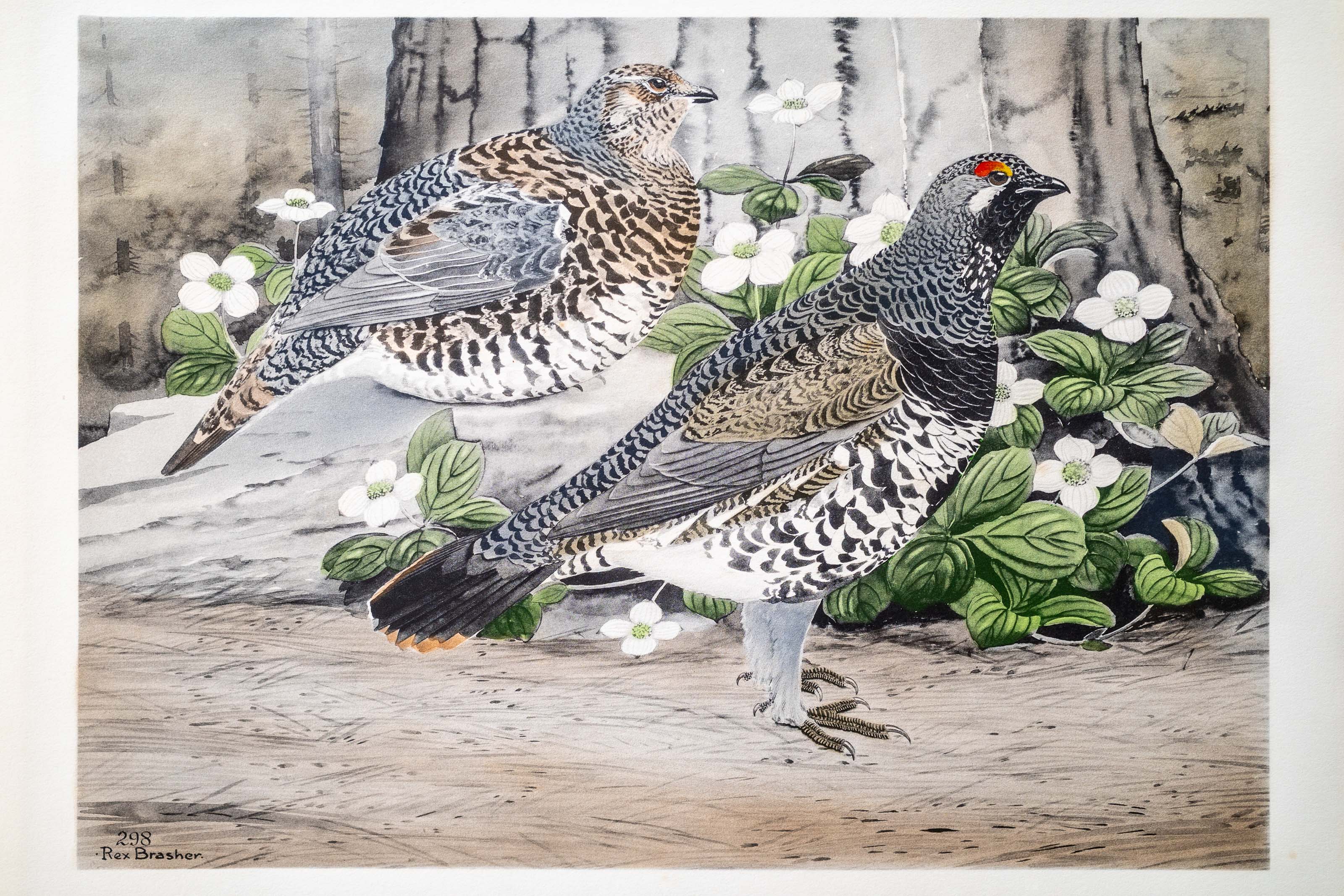
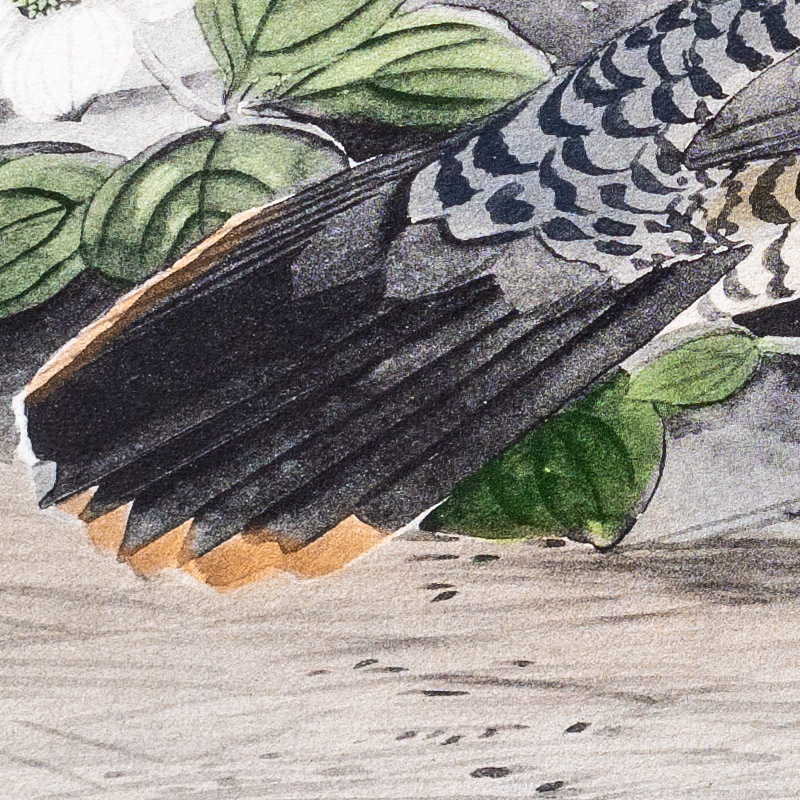
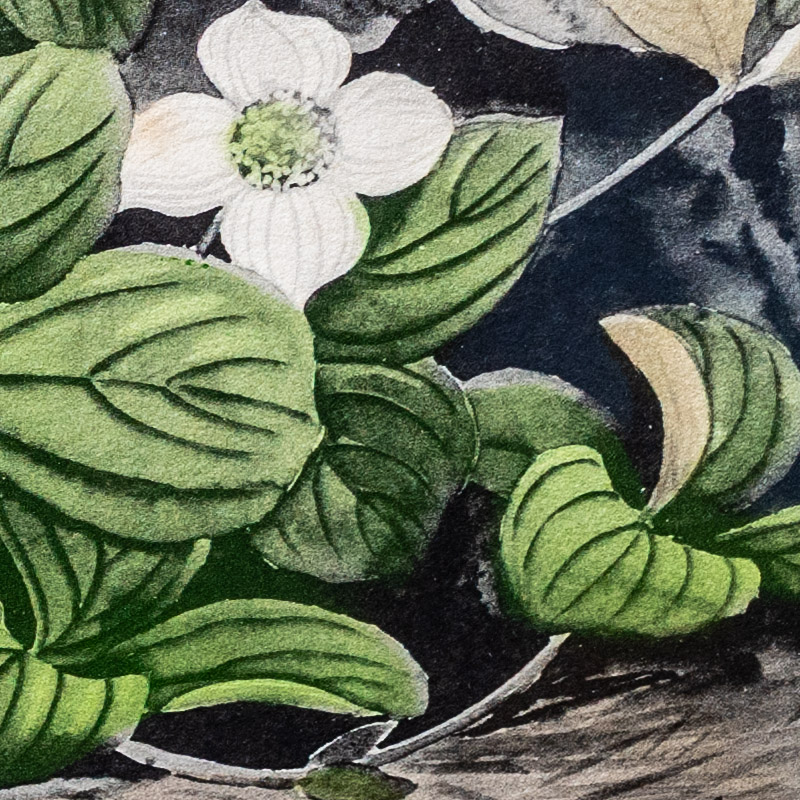

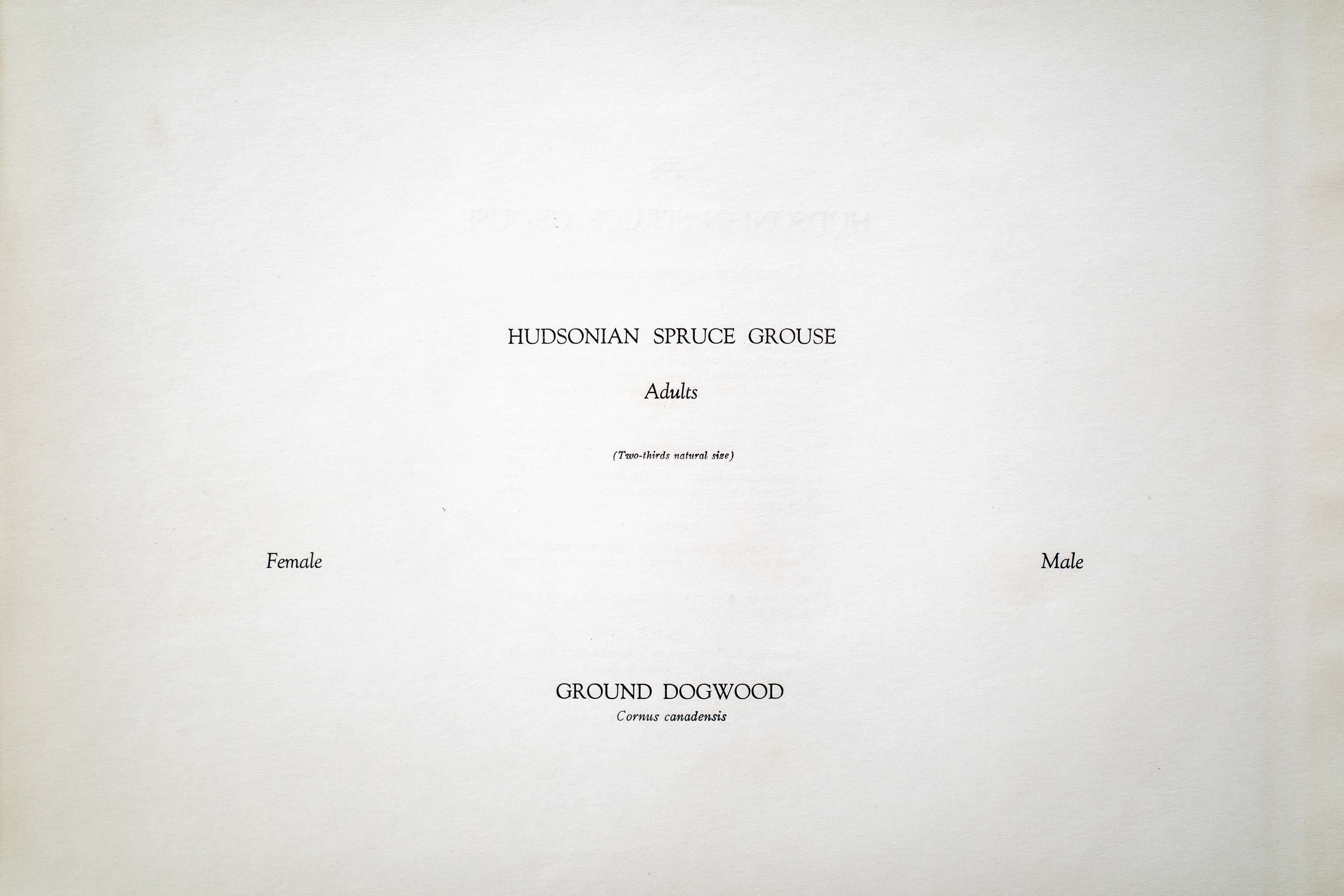
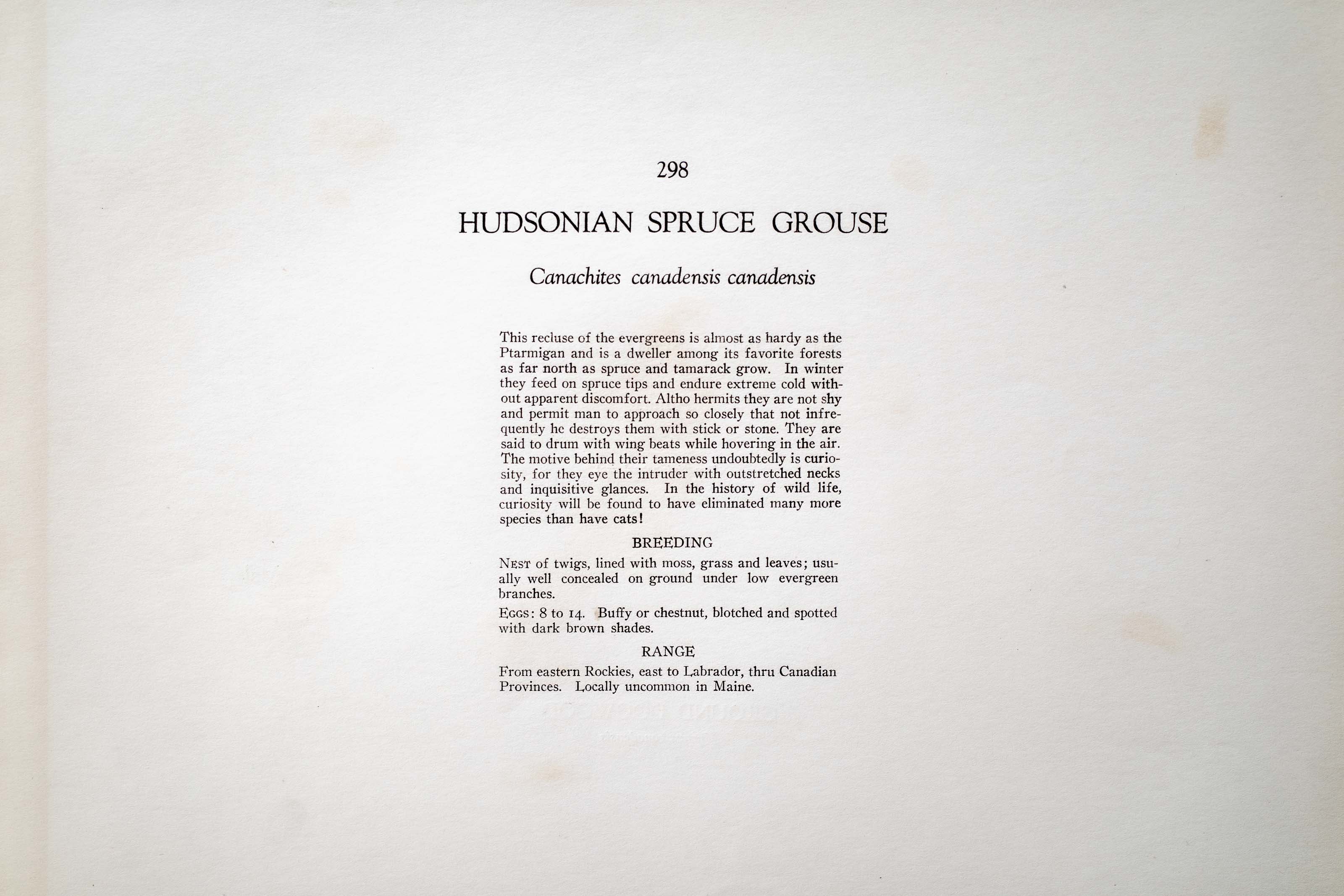

Unknown
1930
5
298
A team of dedicated board members, volunteers, and student interns has published every page in Volume 9. This volume includes 360 images of paintings and lyrical descriptions of birds, now available online for everyone to enjoy anywhere in the world. This is a monumental task. Each volume requires approximately 400 hours to photograph, edit, transcribe, catalog, and publish online. We need your support to complete this work.
If you're tech-savvy, have a good eye, are meticulous with details, and love structured data, please consider volunteering by emailing us at hello@rexbrasher.org.
We encourage all bird lovers and supporters to consider a monetary donation to support our mission to make Rex's work available for everyone. You can provide a one-time or recurring donation online.
This recluse of the evergreens is almost as hardy as the Ptarmigan and is a dweller among its favorite forests as far north as spruce and tamarack grow. In winter they feed on spruce tips and endure extreme cold without apparent discomfort. Altho hermits they are not shy and permit man to approach so closely that not infrequently he destroys them with stick or stone. They are said to drum with wing beats while hovering in the air. The motive behind their tameness undoubtedly is curiosity, for they eye the intruder with outstretched necks and inquisitive glances. In the history of wild life, curiosity will be found to have eliminated many more species than have cats!
NEST: of twigs, lined with moss, grass and leaves; usually well concealed on ground under low evergreen branches.
EGGS: 8 to 14. Buffy or chestnut, blotched and spotted with dark brown shades.
From eastern Rockies, east to Labrador, thru Canadian Provinces. Locally uncommon in Maine.